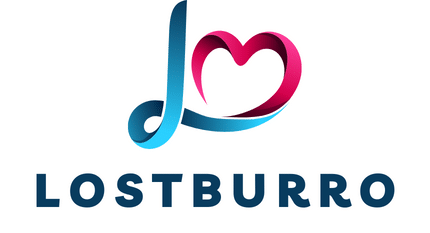What Are the Advantages of Using Wearable Tech for Employee Health Initiatives?

In today’s world of high-tech gadgetry and the ever-evolving digital landscape, a particular type of technology is increasingly being used in the workplace: Wearables. Wearable technology—devices that can be worn on the body—plays a significant role in health and wellness programs for employees. Explore in this article the many benefits wearables bring to the table in fostering employee health and well-being.
Driving Employee Wellness with Wearable Tech
Wearable technology has made strides in promoting wellness and physical fitness among employees. Their increasing usage is not surprising given the plethora of benefits they offer. Notable among these devices are fitness trackers and smartwatches that monitor metrics such as heart rate, sleep patterns, and physical activity levels.
A lire également : How to Establish a Successful Urban Farming Start-up in the UK’s Major Cities?
Wearables make it easier for employees to take charge of their health by providing real-time data on their vital signs. This encourages individuals to adopt healthier habits, leading to improved wellness and productivity at work. The constant feedback received through these devices can motivate employees to reach their fitness goals. Utilizing wearable technology for wellness programs enhances the overall wellness culture within the workplace.
The Role of Wearable Tech in Employee Health Programs
Employers increasingly recognize the value of integrating wearable technology into their health and wellness programs. These devices provide a wealth of data that employers can use to track the progress of wellness initiatives and measure their impact.
En parallèle : What Are the Best Strategies for Cybersecurity in the Growing UK Fintech Sector?
One notable advantage of wearable tech is its ability to collect objective data. For instance, a fitness band records the number of steps taken, calories burned, and hours slept. This data helps employers understand how well their wellness programs are working and what they can do to improve them.
In addition, wearables can help foster a sense of camaraderie among employees. Many wellness programs leverage the use of wearables to facilitate group challenges, thereby promoting teamwork and collective effort towards a healthier lifestyle.
The Impact of Wearable Devices on Employee Engagement
Engaged employees are more productive, more loyal, and contribute more to the bottom line. Wearable tech has a significant role to play in boosting employee engagement. The constant feedback from wearable devices can motivate employees to lead healthier lives, which can, in turn, lead to higher levels of engagement.
Many companies use rewards and incentives linked to wearable tech data to motivate and engage employees. By doing this, employers not only promote healthier habits but also foster a culture of recognition and appreciation, which can boost overall employee morale and engagement.
Wearable tech can also enhance communication and collaboration in the workplace. Sharing data and fitness goals can bring employees closer together, fostering a more harmonious and collaborative work environment.
Privacy Concerns and Wearable Technology
Despite the myriad benefits of wearable tech, privacy issues concerning the misuse of data collected by these devices cannot be overlooked. Employers should place a strong emphasis on privacy when incorporating wearable technology into their wellness programs.
The key is to ensure that the data collected is used responsibly and that employees are aware of how their data is being used. Clear communication about data use policies can help alleviate employees’ privacy concerns. Moreover, companies should take steps to anonymize and aggregate the data to prevent any potential misuse.
In conclusion, wearable technology opens up a new frontier in promoting health and wellness in the workplace. From encouraging healthier habits to boosting employee engagement, wearable tech is a tool that employers can leverage to promote a culture of wellness and productivity.
Wearable Tech: A Future-Forward Approach to Employee Well-being
As work cultures evolve and technology continues to permeate every aspect of our lives, wearable tech will undoubtedly play an increasingly significant role in promoting employee health and wellness. By providing real-time feedback, encouraging physical activity, and fostering a sense of community, wearables have the potential to transform the workplace into a healthier, more productive, and more engaged environment.
Wearable technology offers a future-forward approach to employee well-being. It melds the digital and physical worlds to create a wellness culture that not only benefits the employees but also the organizations they work for. Thus, the use of wearables in the workplace represents a cutting-edge strategy in the ongoing effort to enhance the health and well-being of the workforce.
The Scope of Wearable Tech in Promoting Mental Health in the Workplace
A dimension of health that has gained significant attention in recent years is mental health, and rightly so. The impact of mental health on overall well-being and productivity is indisputable. Given the ability of wearable tech to collect and analyse various types of data, its potential in promoting mental health in the workplace is substantial.
For instance, certain wearable devices can monitor stress levels by tracking physiological markers like heart rate variability. This can provide employees with insights into their stress patterns and help them manage stress more effectively. Some wearable devices can even suggest calming exercises or remind users to take breaks, thereby promoting mindfulness and relaxation.
Employers can use this data to gain an understanding of the overall stress levels within the organization and implement appropriate wellness initiatives. For instance, if the data shows high stress levels during specific periods, companies can introduce stress management workshops or relaxation sessions to help employees cope.
Moreover, wearable tech can also cater to the mental health needs of remote workers, who may feel isolated or overworked. By tracking their mental well-being, employers can provide timely support and interventions, ensuring a healthy and balanced work-from-home environment.
However, as with physical health data, the privacy of mental health data is paramount. Employers must ensure robust privacy policies are in place and that employees are comfortable with how their data is being used.
Through the use of wearable technology, employers can support mental health in the workplace, reiterating the idea that health is not merely the absence of physical disease, but also includes mental well-being.
Harnessing Wearable Tech for Holistic Corporate Wellness
Wearable tech is no longer just a fitness fad. It has evolved into a powerful tool that is shaping the future of corporate wellness. By harnessing the data provided by wearable devices, employers can design comprehensive wellness programs that address both physical and mental health needs.
Wearable tech allows employers to move beyond traditional wellness programs that often focus solely on physical health. Instead, employers can adopt a more holistic approach, taking into account diverse aspects of health, from physical activity and diet to stress management and mental well-being. Moreover, the real-time feedback provided by wearable devices can drive behavioral changes and motivate employees to adopt healthier habits.
Additionally, wearable technology can also foster a sense of community and camaraderie among employees. Challenges based on wearable tech data can encourage teamwork, mutual support, and friendly competition, thereby adding an element of fun to health and wellness.
From fitness trackers to smartwatches, wearable devices offer a myriad of opportunities for employers to enhance corporate wellness. However, the key to successfully integrating wearable tech into wellness programs lies in respecting employee privacy and using the data in a manner that benefits the employees.
Today, the 22nd of March 2024, the use of wearable technology in the workplace is more than just a trend—it’s a strategic approach to foster a healthier and more productive work environment. As we move forward, it’s clear that wearable tech holds immense potential in shaping the future of corporate wellness.
Conclusion
In conclusion, wearable technology, with its ability to monitor physical activity, heart rate, sleep patterns, and even stress levels, offers a profoundly transformative tool for employee wellness initiatives. By integrating wearable tech into wellness programs, employers can cultivate a culture of health and wellness, promoting healthier habits, boosting productivity, and enhancing employee engagement.
However, the success of such programs hinges on the responsible use of data and respect for privacy. Employers must ensure transparent communication about data use and take steps to protect employee privacy.
Looking ahead, wearable technology is set to revolutionize corporate wellness, providing a future-forward approach to employee well-being. As technology continues to evolve, and as we gain a better understanding of the intricate link between health and productivity, the use of wearable tech in promoting employee health and wellness is only expected to grow. One thing is certain: wearable technology is here to stay, and it’s changing the way we think about health and wellness in the workplace.
